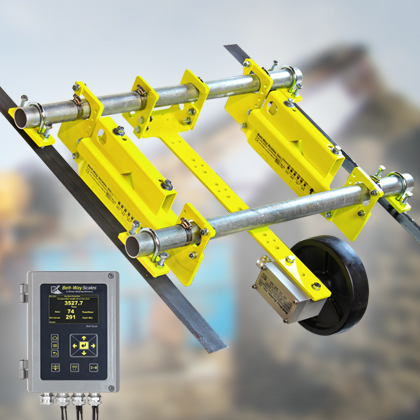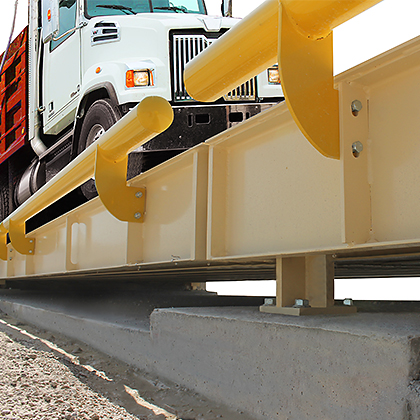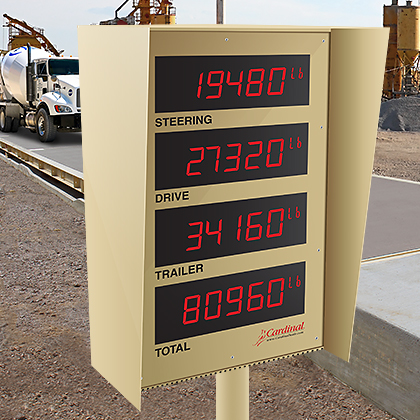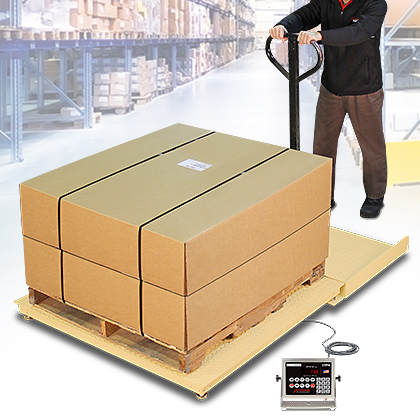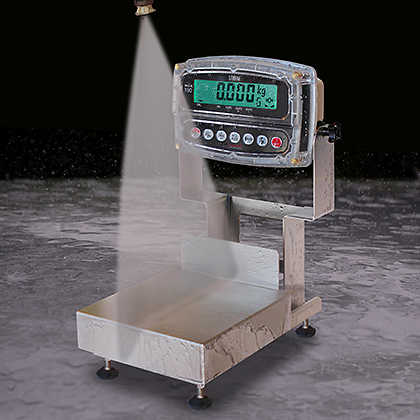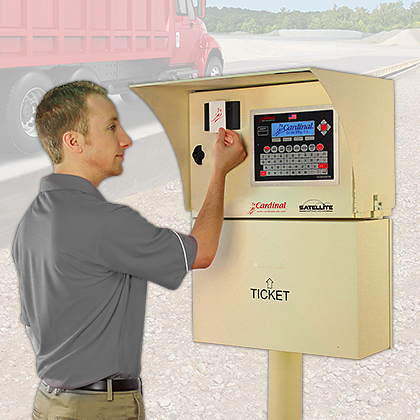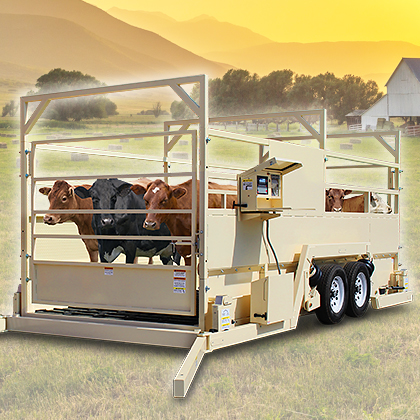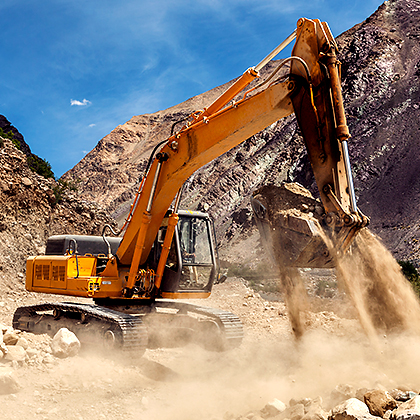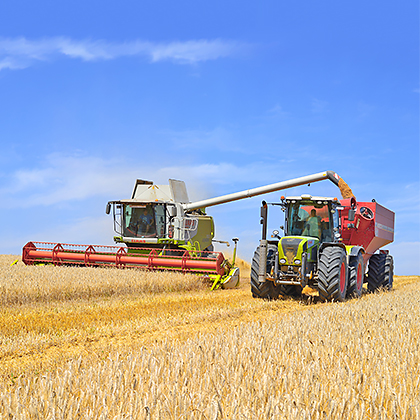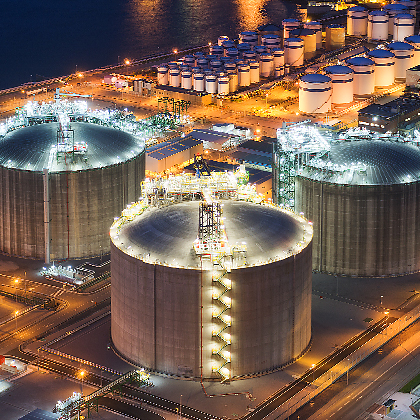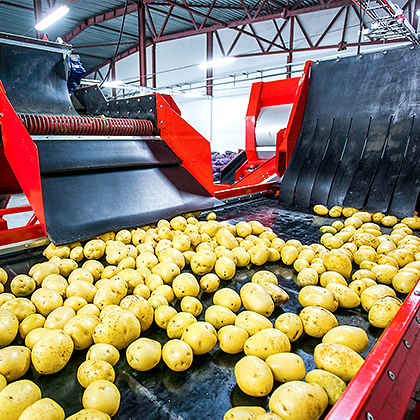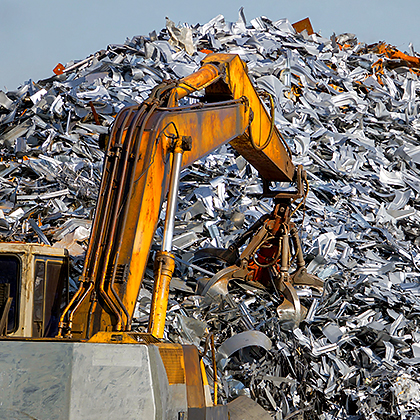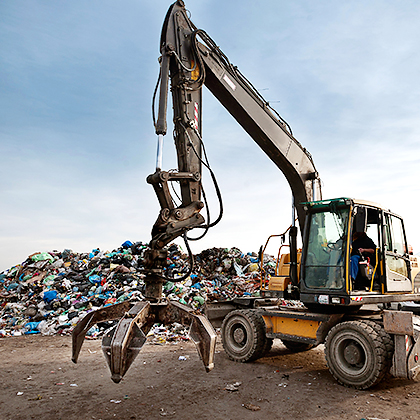What kind of scale do I need?
When deciding on what scale to use for your application, the following points need to be considered:
• What maximum capacity do you need to weigh?
• What are the graduations you need to weigh in? For example, do you need to be able to weigh in 10lb increments, or 1/4lb increments?
• What is the size of the items you’re going to weigh? The weighing platform must be large enough to accommodate the items.
• If money will be changing hands over the value that the scale displays, the scale will need to be NTEP (National Type Evaluation Program) certified.
• The scale must be suitable for the application, i.e. you wouldn’t want to use a truck scale to weigh diamond earrings!
What scale capacity is required for my application?
A good rule of thumb is to consider the heaviest weight you generally use plus the container or packaging weight.
What constitutes a truck scale?
A truck scale is a vehicle scale with a platform designed specifically to weigh trucks and large vehicles. They are available in a variety of platforms such as pit-types, surface or above-ground, steel, concrete, in-motion, etc. Truck scales can be fully mechanical, electromechanical, or use load cells which can have either analog or digital output signals if electronic, or hydraulic output.
What is Cardinal’s warranty on truck scales?
For vehicle scales (Deck and Below Excluding PSC series) the term of warranty is 5 years. For PSC and LSC the warranty is 3 years. And for In-Motion Vehicle Scales the warranty is good for 1 year.
What is a dial scale?
A dial scale is a mechanical, spring-loaded design that displays weight measurement that is indicated by moving a dial or needle.
What is a weight indicator?
Usually colloquially referred to as the “head” or “readout,” weight indicators display the weight data collected from the load cell. Cardinal’s weight indicators range from completing basic functions such as tare, net, and conversion to Cardinal’s higher numbered indicators that basically have a small computer inside of them.
What is a load cell?
A load cell converts the force of the load into an electrical signal, which is then read and displayed by a weight indictor. Load cells come in a variety of forms and designs. Load cells can have an electronic output (analog or digital) or hydraulic output (fluid pressure).
What is the warranty for Cardinal load cells?
It is 1 year, excluding Hydraulic Cells.
What is NTEP?
NTEP is an acronym for National Type Evaluation Program which issues the certification needed for “Legal for Trade” scale designation. This is a national program with oversight at the state level.
When is NTEP required?
When a commodity is being bought and sold using a scale, the scale must be certified to be Legal for Trade.
What is NIST?
NIST, commonly known as the National Institute of Standards and Technology, is a federal physical science lab that sets US metrology standards and publishes Handbook 44.
What does VCAP stand for?
The Verified Conformity Assessment Program (VCAP) is a program that was developed by the National Conference on Weights and Measures to verify that load cells, weight indicators, load receivers, and complete scales produced by a manufacturer meet the same environmental influence factor standards as the actual products evaluated under the National Type Evaluation Program. Compliance with VCAP ensures the purchaser that the weighing product has been produced under an audited quality management system and has been tested to verify its compliance with the environmental requirements listed in the National Institute of Standards and Technology’s Handbook 44. Periodic third-party audits confirm that the quality management system remains compliant.
What is ISO 9001?
ISO certification is an ongoing process by which Cardinal Scale improves and monitors the design and production of their weighing systems, measures quality, and places a priority on consistently producing a better product.
What does the IP rating mean?
The IP rating (international protection) is the rating of protection against external factors like dust and water. The rating is a scale that ranges from IP65 to IP69. For example, IP65 is dust-tight and protection from low-pressure water jets, while IP69 can withstand high-pressure jets or complete submersion.
What is Gross weight?
Gross weight is the total weight on the scale of the container plus the product. This is synonymous with shipping weight.
What is Net weight?
Net weight is the weight of the commodity minus the receptacle/packaging weight.
What is Tare weight?
Tare weight is the weight of the receptacle/packaging.
What is totalization?
This is the ability of an indicator or weighing system to sum a total weight.
What is the function of the “units” key?
This allows a scale to display desired units such as pounds, kilograms, ounces, etc.
What is the “Auto-Off” function?
This simply means the scale will turn off automatically when not in use.
What is the “Auto-Zero” function?
Often referred to as “zero tracking”, this means the scale will automatically set to zero when the scale activates, or if the weight is within a certain tolerance close to zero.
What is “creep” in terms of load cell measurements?
Creep is the change in load cell signal occurring with time while under load and with all environmental conditions remaining constant.
What is hysteresis?
Hysteresis is the maximum difference between load cell output readings for the same applied load; one reading obtained by increasing the load from zero, and the other by decreasing the load from rated output.
What is nonlinearity?
Nonlinearity is the load cell calibration curve’s maximum deviation starting at zero load and ending at the cell’s maximum rated capacity. Nonlinearity measures the cell’s weighing error over its entire operating range, but is measured on increasing loads only.
What is linearity?
Linearity is the ability of a scale or balance to show the correct value throughout its weighing range. It is usually tested by placing weights on a scale from near zero to full capacity.
What is eccentric loading?
Eccentric loading is the testing of a scale or load cell by placing a load on it that is not aligned with the platform center or load cell loading axis.
What is deflection?
Deflection is the movement of the weighbridge as a result of a load, such as the bending of a beam or girder.
What is “cornering” in scale jargon?
Cornering is the placing of calibration weights on the corners of a platform to ascertain whether the load cells located in the corners weigh relatively close to one another. If the load cell(s) are giving irregular readings, a scale calibration will be needed.
What is leveling?
Leveling is the procedure to set a scale horizontally to find a position that can garner repeatable results.
What is excitation?
Excitation is the voltage or current applied to the input terminals of a load cell.
What is signal?
Signal is the millivolt return of a load cell, or the information being sent to an indicator.
What are tolerances?
Tolerances are the amounts of error allowed in a given value. These are usually stated as a percentage of a nominal value which is demonstrated in plus or minus of so many units of measurement.
What are divisions?
Divisions are the number of increments a scale yields between zero and the scale’s capacity.
What is resolution?
Resolution is the smallest increment of weight that can be detected or displayed by the weighing system.
What is a calibration?
Calibration is the process of adjusting a scale so that it will accurately indicate zero and/or accurately indicate weight in accordance with its capacity.
What is a calibration weight?
A calibration weight is a test weight that has been calibrated by a state’s reference standards. These are needed to officially calibrate a scale.
What is a multi-platform scale?
A multi-platform scale is an individual scale for each axle in the same foundation. The truck is driven onto the scale positioning each axle on its own scale.
What is EMI and RFI?
EMI (Electro Magnetic Interference) and RFI (Radio Frequency Interference) are disturbances generated by external sources that affect the electrical circuits in a scale or weight indicator. EMI comes from industrial type equipment such as welders, motors, and solenoids. RFI comes from devices such as hand-held radio transmitters and cell phones.
What is a surge suppressor and why is it needed?
A surge suppressor (or surge protector) is a device that protects electronic equipment from damage in the event of a power surge. Since power surges are very common occurrences (such as lightning into a power line or large high-power equipment switching on and off), and as technology has advanced, electronics have grown more sensitive to fluctuations in the power provided to them, surge suppressors are needed to protect your investment from damage.
What is baud rate?
It is the speed of communication over a data channel. A greater number signifies a higher speed of transmission of data.
What is BMI?
BMI is a measure of body fat based on your weight in relation to height.
What is drift in a load cell?
Drift is a random upward or downward change in load cell output, most often caused from temperature changes.
What is dead load?
The weight of load-supporting structures of the scale (like the weigh bridge or platform), the value of which needs to be evenly distributed between the load cells in the scale.
Why is it not recommended to cut load cell cables shorter?
Load cells have been temperature compensated with a specific length of cable. Cutting the cable shorter will change the specifications of the load cell. Excess cable should be coiled and secured within the junction box (if it will fit).
How long can a RS232 serial cable be to a printer or remote display?
Due to sensitivity to noise causing loss of signal, is recommended to set a limit of approximately 15m or 50ft on cable lengths for anything up to 9600 baud.
What is 20ma current loop operation?
20ma current loop is a current-based method of serial communications between digital devices. 20ma is less susceptible to noise and allows longer cable lengths than RS232.
What is Gravity Compensation?
Gravity Compensation is a function that accounts for the latitudes and elevations of where the scale was calibrated and where it will be used. This function means the scale can be calibrated in one location and then adjusted to match the acceleration of gravity at the location where it will used.
What is Handbook 44?
Handbook 44 is a comprehensive set of requirements for weighing and measuring devices that are used in commerce and law enforcement activities; although it is not a federal law. It was developed and is updated annually by the National Conference on Weights and Measures (NCWM). Its complete title is “Specifications, Tolerances, and Other Technical Requirements for Weighing and Measuring Devices.”
What is OIML?
The International Organization of Legal Metrology (OIML), is the international organization for developing documentary standards related to regulated and legally mandated measurements. It was created in 1955, and has an objective of harmonization of national regulations and metrological controls (e.g., type approval, verification, etc.) applied by legal metrology authorities.
What is NSF?
NSF (National Sanitation Foundation) is an American product testing, inspection and certification organization, that was founded in 1944 from the University of Michigan’s School of Public Health to standardize sanitation and food safety requirements.
What is Measurement Canada?
Measurement Canada is the Canadian government agency whose mission is “to ensure equity and accuracy where goods and services are bought and sold on the basis of measurement, in order to contribute to a fair and competitive marketplace.
How do I clean my scale or weight indicator?
Unless your scale or indicator is certified IP67 or higher, do not submerge it in water, pour or spray water directly on it to clean. Use only a damp soft cloth or plastic scouring pad, soft water (if possible) and a mild non-abrasive detergent. Do not use acetone, thinner or other volatile solvents and anything that will scratch the surface, such as steel pad, wire brushes or scrapers.
What is the difference between an analog and digital load cell?
Both load cells use strain gauges and their signal begins as an analog voltage. The difference is, a digital load cell converts the analog signal to digital internally and outputs a digital signal (1 or 0). Digital load cell signals are stronger, are far less susceptible to noise interference, and provide data output at a faster rate since they process weight data multiple times per second.
An analog load cell outputs a continuous voltage that is very small (measured in milli-volts) and is converted externally by an analog to digital converter. The small voltage change in analog load cell outputs are affected more by noise interference, and provide data output at a slower rate, since they process weight data continuously in real time.

